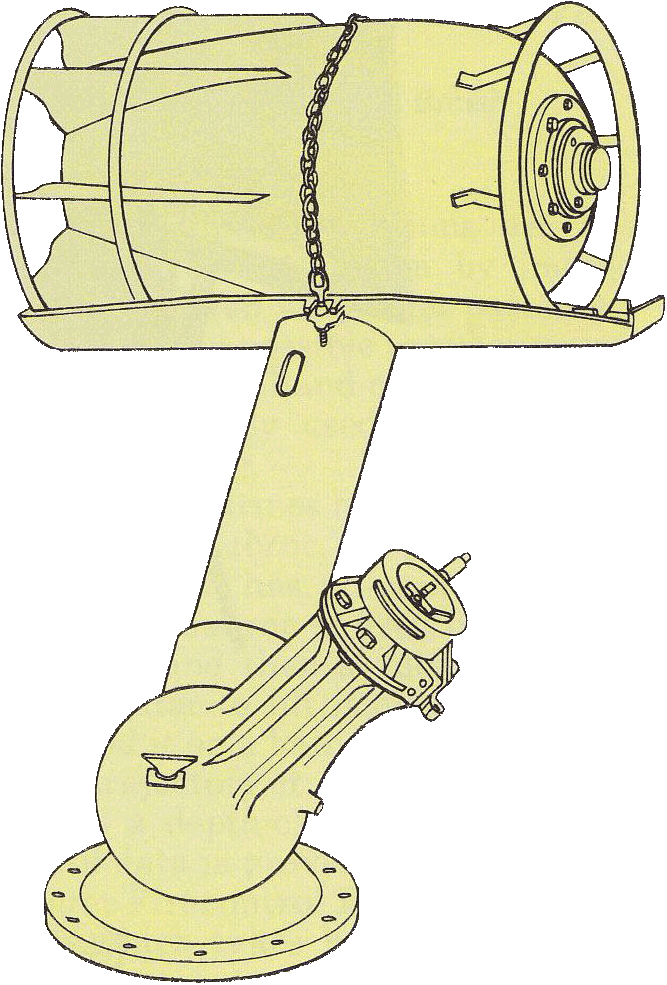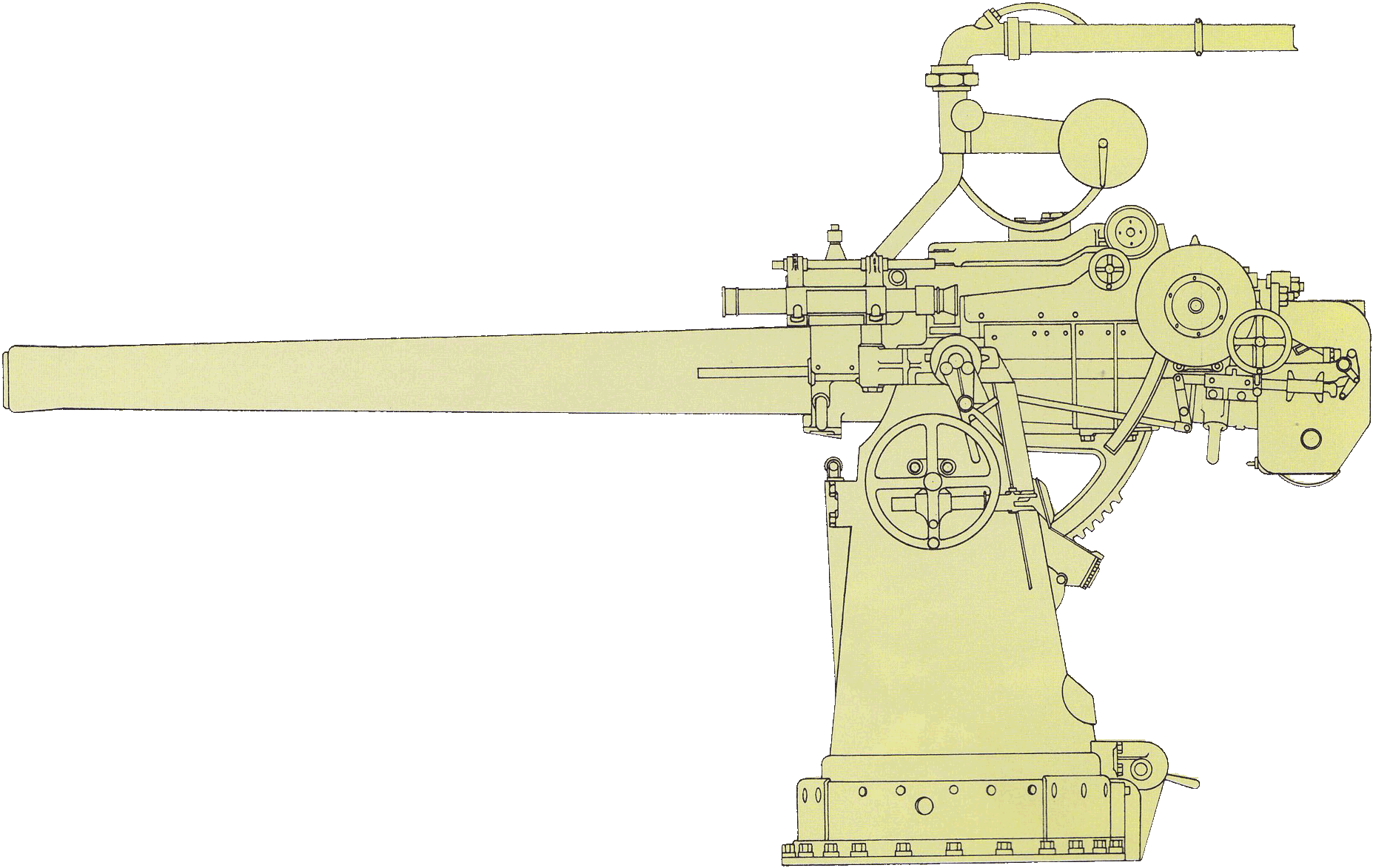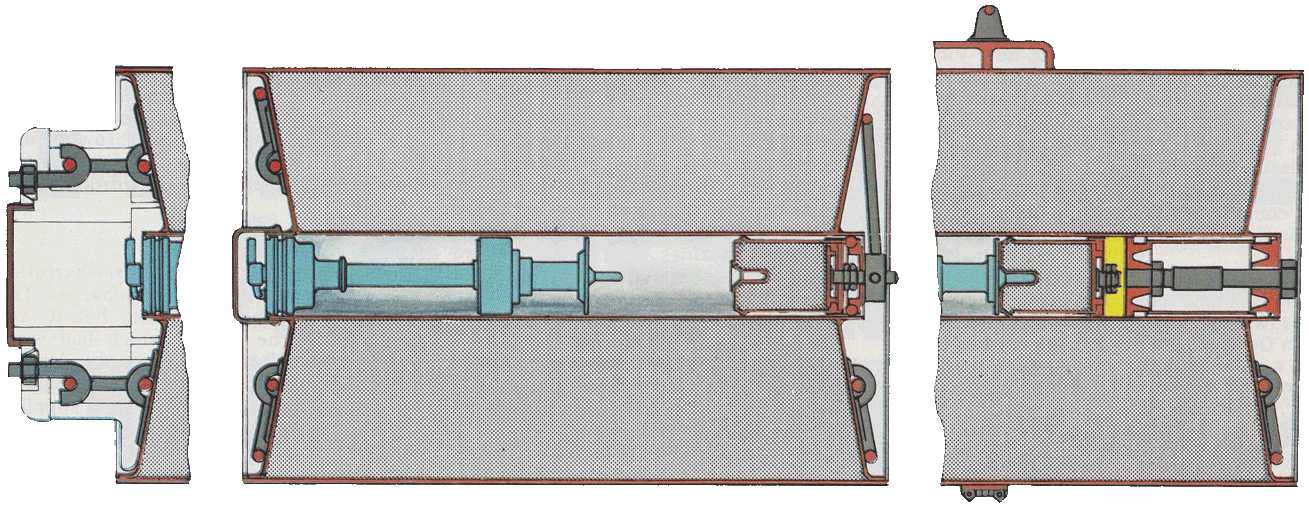
ANTONY PRESTON, JOHN BATCHELOR
THE SUBMARINE SINCE 1919
The news of the success of Polaris, after many pundits had said it would not be ready for another ten years, spurred the Soviet Navy on to develop a similar underwater deterrent. As we have seen, some of their conventional submersibles had been modified to fire two or three surface-to-surface missiles, but in 1958 work began on converting the first of ten "Z" Class to fire IRBMs. The same system was used as before, two or three tubes housed in the fin, which opened like a clam shell to allow firing. Thirty "G" Class were specially built for the job, and then came the nuclear powered "H" Class, still using the same system. Not until 1968 did the first news leak out of a Russian version of the Polaris system, when the "Y" Class appeared, with a very similar configuration to the American boats. Incidentally, all Russian class-designations are those assigned by NATO and bear no relation to what the Red Fleet may call them.
The first Russian nuclear hunter-killer submarines came into service between 1961 and 1963. Known in the West as the "N" or "November" Class, they numbered 15 units, and at least two were named. The Leninskii Komsomol emulated the Nautilus in the summer of 1962 by crossing the North Pole submerged, but in 1970 one of the class sank south-west of the British Isles. The "V" or "Victor" Class which followed were generally similar but greatly improved in detail, and the 12 in service command a high reputation in Western intelligence circles.
The next country to build nuclear submarines was Great Britain, which had been experimenting with nuclear energy for some years. To save time a reactor was bought from the United States in 1958, to power HMS Dreadnought, the Royal Navy's first "nuke", and the British reactor went into a second prototype, HMS Valiant, two years later. Since then a further two classes have been ordered, making a total of seven completed and four building. In 1963 it was announced that the Royal Navy would buy the A-3 Polaris weapon system from the United States and install it in their own hulls. These materialised in 1967-69 as the four Resolution Class, which replaced the RAF's bomber force as Great Britain's strategic deterrent.
France was hardly likely to allow the British to have an "independent", nuclear deterrent, but when the United States refused to supply Polaris missiles they went ahead with their own version, the MSBS M-1 (Mer-Sol-Balistique-Stratégique). A nuclear submarine had been laid down in 1958, but after being cancelled a year later she was redesigned as an experimental submarine to test the missiles and other equipment, and was appropriately named Gymnote after Gustave Zede's prototype. She fired the first ballistic missiles, but the first operational FBM, Le Redoutable, did not come into service until 1971.
Apart from the People's Republic of China, whose intentions remain inscrutable, the only other country to contemplate the huge expense of nuclear propulsion was Holland. However, the two hulls planned in the early 1960s were replaced by conventional submarines, leaving only four navies with nuclear submarines. Red China certainly has the capability to build both nuclear submarines and Polaris-type missiles, but apart from a mysterious sighting of an Albacore-hulled submarine under construction in 1969, nothing is known.
The US Navy has improved the firepower of its later FBM submarines by arming them with the more powerful Poseidon missile. Very similar in appearance to the A-3 Polaris, Poseidon is two feet wider in diameter and three feet taller, but this modest increase in dimensions conceals many differences. Poseidon has twice the payload, which allows it to carry multiple warheads; this makes counter-measures even harder than before, since each missile can have three possible targets. The modifications include alterations to the missile tubes and replacement of the fire control system.
Despite the clear advantages of nuclear propulsion, conventional submersibles are still being designed and built. Nor are they confined to the smaller navies who cannot afford the cost of nuclear boats, for a new class of Russian diesel-electric submarines has been seen. One reason for this is that nuclear propulsion makes very heavy demands on skilled personnel, quite apart from its cost, and another is that the size of present-day nuclear submarines makes them unsuitable for coastal waters. There are areas in which small submersibles can function more effectively than the big fleet types, and so there are a number of French. British and German designs available for sale to foreign buyers.
Today the submarine represents the most potent naval weapon available. The nuclear submarine in particular represents a terrible threat to all surface warships, for her speed enables her to close in, attack with a variety of weapons such as guided torpedoes or even missiles, and then withdraw at high speed. The awesome destructive power of Polaris has already been described, but its value is enhanced because, unlike any other submarine weapon, it can be fired at a range of 2,000 miles or more. Even today the old convoy maxim holds good, that an attack submarine must sooner or later approach her target, and thus risk a counter-attack; a Polaris submarine, on the other hand, avoids all contact, and so she has the world's oceans in which to hide.
The future of the submarine could hardly be brighter. Advances in the design of nuclear reactors will probably reduce their size, and new weapons will increase their capabilities. But their great potential is also stimulating research on counter-measures. By the end of the 1970s we might well see a breakthrough similar in its effect to Asdic, such as a device to enable submarines to be tracked from satellites. Until then the submarine will continue to be the deadly weapon she has become in the last 30 years.

British Resolution. The Resolution was the first British Polaris or FBM (Fleet Ballistic Missile) submarine to be ordered in 1964. She was commissioned in 1967 as the most powerful warship ever to fly the White Ensign. She and her three sisters are armed with sixteen Polaris A-3 2,300-mile range missiles, with hydrogen bomb warheads. Although the missiles and their fire-control systems are American, the reactor and hull are British-designed, and they differ from the US Navy's submarines in having six bow torpedo-tubes. Displacement: 7,500 tons (surfaced)
SUBMARINE WEAPONS & ANTI-SUBMARINE WEAPONS. THE ULTIMATE WARSHIP?
The submarine has come a long way from being armed simply with torpedoes and light AA guns - and effective counter-measures are even more difficult to find than during the desperate days of World War II
At the start of the Second World War the submarine had only one primary weapon, the thermal torpedo, which was kept on course only by gyroscopic stabilisation. She also carried a deck gun of 3-in to 6-in calibre for use against "soft-skinned" targets such as merchant ships, but this was essentially an auxiliary weapon. Gyro-angling enabled the torpedo to change its angle during the run, and thus made it easier for a submarine to reach a good attacking position. Magnetic influence pistols were being introduced to make a torpedo explode within lethal distance under a target, like a proximity fuse, but these proved unreliable when first used.
During the war all operational submarines tended to have their anti-aircraft armament increased. This normally meant adding light automatic AA guns of 20-mm to 40-mm calibre on platforms on the conning tower, the most notable examples of this trend being the German U-Boats, which had a "winter garden" crammed with Flak pieces. The need to reduce drag for high underwater speed put an end to this, and both AA guns and the original deck gun became redundant.
The greatest improvement in torpedo design was the provision of homing devices to enable the torpedo to "seek" its own target. The German acoustic torpedoes showed the way, and by 1945 there were several patterns under development in both the US Navy and the Royal Navy. After the war all navies developed similar weapons, but the limitations of acoustic homing (mainly the danger of a torpedo homing on its own submarine's noise) led to the development of wire guided torpedoes.
Wire guidance is very much older than it sounds, for it was the method by which the first Whitehead torpedo was controlled. The Brennan and Nordenfelt torpedoes of the 1880s also relied on a trailing wire paid out from a spool, but today's torpedoes are considerably more complex. Basically, fine wire is paid out from a spool inside the torpedo body, and instructions are sent from the fire control system by impulse down the wire. Even with older patterns of torpedo it has been possible to substitute an umbilical link for the hand-cranked spindles which were formerly used to set the torpedoes before firing.
American submarines have for some time been fitted with Subroc, an advanced weapon system which has no equivalent elsewhere. Briefly, Subroc is fired from a 21-in torpedo tube, and then a rocket motor is fired underwater to lift it clear of the surface and send it on a ballistic course; at the end of its trajectory it re-enters the water and acts as a depth-charge. The essential fire control data is provided by the Passive Underwater Firecontrol Feasibility System (PUFFS), which takes bearings from propeller noises.

A torpedo being loaded aboard a British submarine
Aircraft, particularly the helicopter with its ability to hover overhead, remain the submarine's worst enemy. At first the only defense was the passive one of providing a sensor at the masthead to detect the noise of a helicopter's engine, but now Vickers Ltd have produced the Submarine Launched Airflight Missile (SLAM) to allow a submarine some means of retaliation. SLAM is an adaptation of the land-based Blowpipe missile, a light close-range ground-to-air weapon which can be fired from the shoulder. It comprises a compact launcher with six missiles, stowed in the fin but raised to fire, and controlled by television guidance from the submarine's control room. In recent trials in the old British submarine Aeneas, the system proved successful, and it could seriously reduce the effectiveness of antisubmarine helicopters.

American Twin 20-mm Gun. Many wartime submarines in the Pacific used this twin hand-operated version of the 20-mm Oerlikon light AA gun. It was mounted on a platform on the conning tower or on deck, and was also used against small surface targets
The Polaris system for firing ballistic missiles has already been described, but the Russians are now the only submarine power to employ cruise missiles. The Americans dropped their Regulus I and Regulus II systems because they both involved operation on the surface, which has become too risky for submarines. One wonders, therefore, about the value of the Russian Shaddock and Sark missiles in the early missile submarines.
The ultimate in submarine firepower is the American Trident project, formerly known as the Underwater Long-Range Missile System (ULMS). The project calls for ten submarines of about 15,000 tons displacement (submerged), each one armed with 24 Trident missiles capable of travelling 6,000 miles. The size of missile would permit even more multiple warheads than the Poseidon, as well as decoys and jamming devices to enable its warheads to beat the most advanced defenses. The cost is estimated to be $1,000 million per submarine, but the detente between Russia and the West will hopefully allow such a terrifying idea to be cancelled.

Hedgehog Attack Pattern. The Hedgehog mortar could be fired while the U-Boat was still held in the Asdic beam. The elliptical spread of the bombs was intended to give the best chance of hitting a submarine, and a detonation meant a certain "kill" except in very shallow water
The depth-charge remained the principal weapon against the submarine throughout the Second World War, although it was supplemented by the aircraft bomb, and by specialised weapons such as Hedgehog. After 1945 a variety of launchers replaced the old-style depth-charge throwers and racks, to eliminate the need for an escort to pass over the submarine before dropping her charges.
British Depth-charges. Left: The Mk VII (Heavy) was simply a charge with an added weight to make it sink rapidly. Right: The Mk VII (Aircraft Pattern) was the first airborne depth-charge. Centre: the Mk VII was the standard British depth-charge and differed little from the "D" Type of the First World War
The British favoured a three-barrelled mortar firing full-sized depth-charges. The first pattern was the Squid, but it was replaced by the Limbo, which had more range and could be trained over a wider arc. Limbo also had the advantage of being able to pre-set depth-charges with data supplied direct from the Sonar plot, and it remains in service today as a useful quick-reaction defense against a submarine which gets within a mile.
The US Navy and others favoured a rocket projectile to carry the explosive charge to the submarine. There are several versions of this type of weapon such as the now obsolete American Weapon Alfa, the Bofors quadruple launcher and the Norwegian Terne, but they all suffer from the basic weakness of carrying a small explosive charge, which reduces their chances of damaging a submarine.
The homing torpedo has been turned against the submarine, and it makes a potent weapon, especially when dropped by a helicopter. One way of destroying submarines by homing torpedoes is to programme the torpedo in a descending spiral; another is to use wire guidance. Significantly the three most advanced anti-submarine missile systems in existence today are merely delivery systems for homing torpedoes.

American Aircraft Depth-charge. During the war considerable time was spent on re-designing the old "ash-can" shape of the depth-charge to improve its flight-path and its rate of sinking. This was the US Navy's airborne depth-charge
The American Asroc system works like Subroc, but in reverse. It fires a missile on a ballistic trajectory to the target area, and then parachutes a torpedo into the sea. The French Lamafon is a 21-in torpedo with wings and tail, which is launched by rocket and then glides to its target area. The Anglo-Australian Ikara system differs from the earlier two in that the missile is actually a small delta-winged aircraft carrying a torpedo; its virtue is that it can be flown on a revised course to counteract evasive manoeuvres by the submarine, and when it reaches the area the carrier breaks up and releases the homing torpedo.
The original Asdic and hydrophones which were the only detection devices of the Second World War have been much improved and developed. These devices are now known as active and passive Sonar respectively, and the way in which they can be used has changed. Some U-Boats found that they could hide under "thermal layers" of seawater of a different temperature, which made the Asdic beams bounce off. This has been countered by the Variable Depth Sonar (VDS), which is simply a Sonar transducer towed behind an escort and lowered to search beneath a thermal layer. The US Navy has developed very powerful Sonar sets, and they are frequently mounted under the bow, where the hull turbulence is at a minimum. Helicopters can use their dipping Sonars for the same purpose, and formidable machines like the Sikorsky Sea King have space for homing torpedoes as well.

American Depth-charge Projector. A later development of the British wartime depth-charge thrower. Basically a spigot mortar, two or three would be mounted on each side of a ship, and set to project a pattern of charges
However, the most potent anti-submarine weapon which has emerged is the submarine herself. She has many advantages, and they are multiplied by nuclear propulsion. Because she operates below the surface a nuclear hunter-killer suffers no reduction of speed from bad weather, and she can either use a thermal layer for her own protection or simply pass through it. She is her own sonar platform, with performance as good as her opponent's, and if she goes deep the pressure of water will reduce the noise of cavitation from her propeller. Her main problem that she is operating in a semi-blind situation, and does not have the easy communication enjoyed by surface warships, but this is a small problem to set against her undoubted abilities as a submarine-killer. Here again, we should not be surprised to see a radical improvement within the next few years.

British 3-in Submarine Gun. The 3-in High-Angle gun was fitted to wartime submarines of the "S" and "U" Classes to provide defense against aircraft, but it was also useful against land targets or small vessels not worth a torpedo
At this point we leave the submarine. She is at the height of her powers, having developed from a crude submersible torpedo-boat to a giant warship capable of cruising at will beneath the surface of the sea. History shows that every weapon is eventually displaced by a new one, but for the moment the submarine has no challenger.

The Hedgehog. The original Hedgehog was refined, and by the end of the war was a very elaborate weapon. This was the US Navy's version, but in essence it is the same spigot mortar firing a cluster of contact-fused bombs ahead of the ship
We have much more interesting information on this site.
Click MENU to check it out!
∎ cartalana.com© 2009-2025 ∎ mailto: cartalana@cartalana.com
